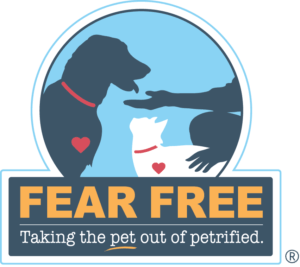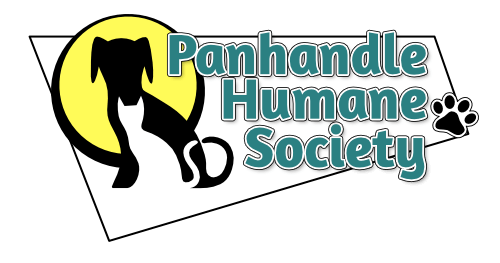About Us
Mission Statement
The Mission of the Panhandle Humane Society is to provide a nurturing and fear-free environment for the community and its pets in our care by utilizing the Five Freedoms model.
The Five Freedoms of Animal Welfare:
- Freedom from hunger and thirst by easy access to fresh, clean water and a diet to maintain health and vigor.
- Freedom from discomfort by providing an appropriate environment, including shelter and a comfortable resting area.
- Freedom from pain, injury, or disease by prevention or rapid diagnosis and treatment.
- Freedom to express normal behavior by providing sufficient space, proper facilities, and the company of the animal's own kind.
- Freedom from fear and distress by ensuring conditions and treatment which avoid mental suffering.
The Five Freedoms were developed in response to a 1965 UK government report on livestock husbandry and formalized in a 1979 press statement by the UK Farm Animal Welfare Council. The Five Freedoms have been adopted by professional groups, including veterinarians and the American Society for the Prevention of Cruelty to Animals.
Fear Free Shelter
 The staff at Panhandle Humane Society are certified in the Fear Free Shelter program. This training helps us recognize the signs of FAS (Fear, Anxiety, and Stress) and Frustration in the animals. As a result, we can provide ways to minimize and possibly eliminate those emotions. Learn more at fearfreeshelters.com
The staff at Panhandle Humane Society are certified in the Fear Free Shelter program. This training helps us recognize the signs of FAS (Fear, Anxiety, and Stress) and Frustration in the animals. As a result, we can provide ways to minimize and possibly eliminate those emotions. Learn more at fearfreeshelters.com
What is a No Kill Shelter, and why Panhandle Humane Society is not one
We are often asked if Panhandle Humane Society is a “No Kill” Shelter or a “Kill” Shelter. The answer is - neither.
First, let’s start with what some “No Kill” Shelters do for Intakes. They are not Open Intake shelters, meaning they don’t take in stray animals. They only take in surrenders and are selective about which animals they will take in. Nothing with severe behavior or medical issues, only highly adoptable animals. And then, if the animal has an issue, they will transfer it to another rescue or shelter so they don’t have any euthanasia on their books.
Second, we’ll go over what a “Kill” Shelter is. These shelters have a high euthanasia rate, often due to the unregulated number of stray and surrendered animals they take in every day, with not enough adopters for them. A shelter can only hold so many animals before it becomes overcrowded, with the potential for uncontrolled zoonotic diseases, so they are forced to euthanize animals at a high rate. Even worse, some shelters have restrictions on adoptions by their local ordinances and cannot adopt stray animals if they are not claimed by their owner.
This is why Panhandle Humane Society requires appointments for animals whose owners can no longer keep them. It helps us regulate our intake numbers and ensure sufficient room for strays. We also do anything to return stray animals to their owners!
So, in what circumstances does Panhandle Humane Society euthanize animals? For starters, we don’t euthanize animals for space, breed, or length of stay. As long as the animal is adoptable, has a good quality of life, and is safe for the community, it will stay here until its perfect person/home comes along. Some animals come into Panhandle Humane Society and are not properly socialized. Maybe they exhibit outright aggressive behavior, or their behavior is simply unpredictable. (This can be true even for puppies!) Panhandle Humane Society will not place these animals into our community and into a home where they could possibly inflict harm (or worse) to a person or another animal. You might be thinking, “But someone would give them a good home!” Unfortunately, the majority of pet owners don’t have the experience, time, or patience to deal with these issues. Even our animals with mild behavior issues get returned to the shelter! Some animals come into Panhandle Humane Society with severe injuries or illnesses. We have them assessed by our veterinarian, and if the animal is suffering and not treatable, it is humanely euthanized. We can’t focus our finances on one animal, especially if we can use that money to help another group of animals in need. If we get kittens or puppies in without a mom and they can’t eat on their own, they are humanely euthanized. In our experience, it is extremely difficult to bottle-feed babies, and though we do try to find fosters for them, it is an emotionally draining task. Even with a foster’s best efforts, often, the babies will pass away, and it is heart-wrenching. This is why we ask that if you find a litter of kittens (or puppies) and you don’t see a mom, leave them alone, as the mom is probably off finding food. Something you can try is sprinkle a ring of flour around the kittens, then if the mom is coming around, she will leave footprints. Plus, if the kittens have full bellies and appear to be clean, then mom is definitely taking care of them!
Now, take a look at your average animal shelter. The people who work there are people who love animals. These aren’t people who want to see animals die unnecessarily. When we have to euthanize an animal, it hurts us. We hurt for the animal, who should not have to have its life ended, especially for those whose job it is to care for them. We grieve for the life they could have and should have had if not for their unfortunate circumstances. It is our employees who experience the sadness of an animal who is old or ill, and its owners don’t want it anymore or couldn’t be bothered to socialize it, and yet we are the ones who are there when the animal takes its last breath. We are the ones who experience vicarious trauma and compassion fatigue, and we do it over and over again. Our euthanasia rate may be low and put us in the “No Kill” range, but it doesn’t lessen the pain. And then, to add insult to injury, we get yelled at and scrutinized on social media when we euthanize someone’s animal when they gave it to us to deal with or couldn’t be bothered to look for it when it went missing or come for it when they knew it was at the shelter. Our decision to euthanize an animal has and will NEVER be based on an owner and how we feel about them. That would be the worst thing we could do, and none of us could imagine doing that to the animals that come through our doors.
This article is not to make anyone feel sorry for us. We all choose to work at this shelter because of the good we do. Reuniting animals with their owners and finding new homes for strays and surrendered animals is all very rewarding. When customers come into this shelter, as with any business, we only ask that they recognize that we are human beings. That on any given day, we might be at the breaking point. Maybe we just euthanized a litter of unweaned kittens. Maybe it was a dog that started off great in adoption and we all grew to love, and its behavior is declining, so the best outcome for that dog is freedom from its fear, anxiety, stress, and frustration.
Shelter Inspection
Panhandle Humane Society is inspected by the Nebraska Department of Agriculture at least once every year, sometimes more often. Inspections are not announced ahead of time. The inspector checks for cleanliness, food and bedding storage, and vaccination records. They also check to make sure all animals in the building have a kennel card that provides information on each animal. To date, Panhandle Humane Society has passed our inspections.
Dept of AG Commercial Dog and Cat Inspection Program